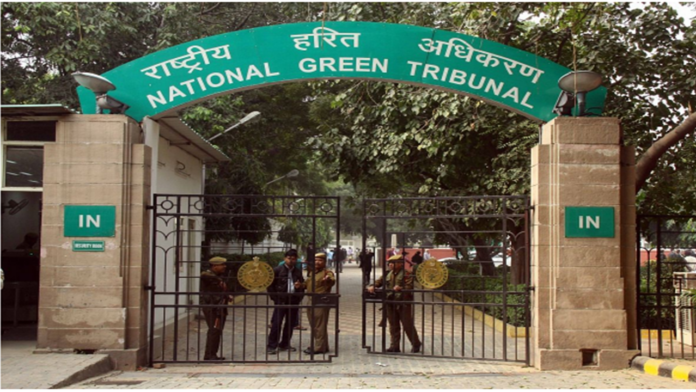The National Green Tribunal (NGT) has taken suo motu cognizance of rising ground level ozone pollution across India’s major cities.
The petition is registered suo-motu on the basis of a news item dated 06.08.2024.
News item relates to the rising ground level ozone pollution across India’s major cities.
As per the news item, this invisible gas, unlike the more familiar fine particulate matter, also known as PM2.5, poses a serious health threat, particularly to those with respiratory problems.
The news item states that as per a report by the Centre for Science and Environment titled “Air Quality Tracker: An invisible threat” metropolitan areas of Bengaluru (Karnataka), Chennai (Tamil Nadu), Kolkata (West Bengal), Mumbai and Pune (Maharashtra), Delhi-National Capital Region, Greater Ahmedabad (Gujarat), Greater Hyderabad (Telangana), Greater Jaipur (Rajasthan) and Greater Lucknow (Uttar Pradesh) were analysed and all 10 areas studied witnessed exceeded national ozone standard, with Delhi NCR being the most affected. Ahmedabad and Pune were also found to be experiencing a particularly rapid increase in ozone pollution.
As per the news item, ground level ozone is not directly emitted from any source. It is produced from complex interaction between Nitrogen Oxides (NOx) and volatile organic compounds (VOCs) that are emitted from vehicles, power plants, factories and other combustion sources and undergo cyclic reactions in the presence of sunlight to generate ground level ozone. VOCs can also be emitted from natural sources, such as plants.
The news item further highlights that between April and July this year, Delhi-NCR recorded 176 days of ground-level ozone exceedances, the highest among the ten metropolitan areas studied. Mumbai and Pune both had 138 days, followed by Jaipur with 126 days and Hyderabad with 86 days. Kolkata had 63 exceedance days, Bengaluru 59, Lucknow 49 and Ahmedabad 41. Chennai had the fewest exceedances, with just nine days. Furthermore, ozone levels were elevated even at night, with Mumbai recording the most instances of night-time exceedances.
News item also stated that the duration of ozone exposure lasted an average of 12-15 hours across most cities. Moreover, it alleges that while summer is the peak season for ozone, the problem persists year round in many areas, particularly in sunnier southern cities. The news item also pointed out that as particulate pollution is reduced, issues with nitrogen oxides (NOx) and ground-level ozone increase. This necessitates significant tightening of regulatory benchmarks for ozone to address toxic emissions from industry, vehicles, households and open burning.
The news item asserts that ground-level ozone is a highly reactive gas and has serious health consequences. Those with respiratory conditions, asthma and chronic obstructive pulmonary disease as well as children with premature lungs and older adults are at serious risk. This can inflame and damage airways, make lungs susceptible to infection, aggravate asthma, emphysema and chronic bronchitis and increase the frequency of asthma attacks leading to increased hospitalization.
The news item raises substantial issue relating to compliance of provisions of Air (Prevention and Control of Pollution) Act, 1981; The Ozone Depleting Substances (Regulation and Control) Rules, 2000 and the Environment Protection Act, 1986.
“Power of the Tribunal to take up the matter in suo-motu exercise of power has been recognized by the Hon’ble Supreme Court in the matter of “Municipal Corporation of Greater Mumbai vs. Ankita Sinha & Ors.” reported in 2021 SCC Online SC 897.”
Hence, Principal Bench of Justice Prakash Shrivastava, Justice Arun Kumar Tyagi and Dr. A. Senthil Vel impleaded the following as respondents in the matter:
1) Central Pollution Control Board, through its Member Secretary.
2) Ministry of Environment, Forest and Climate Change, through its Secretary.
The Bench issued notice to the Respondents and listed the matter on 28.11.2024.


